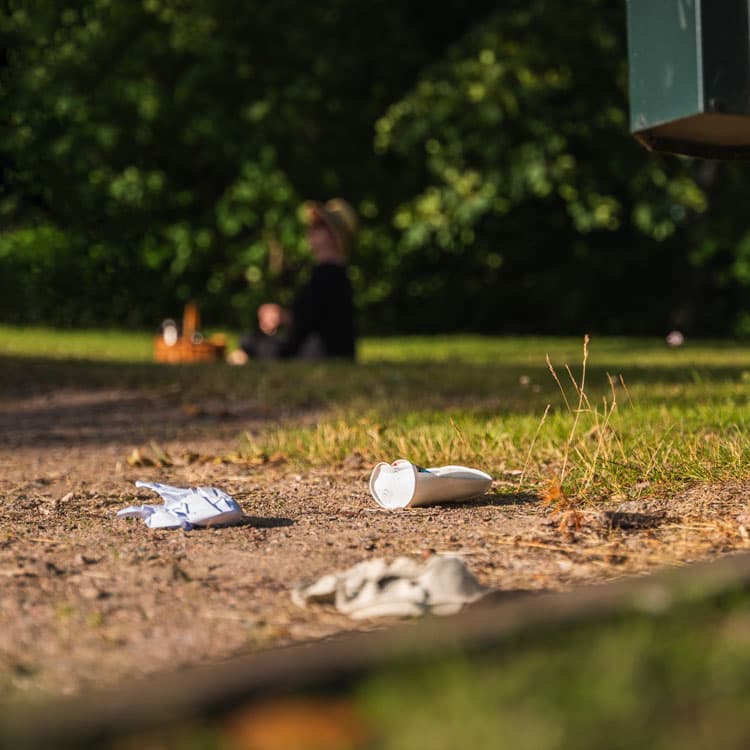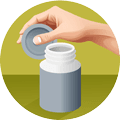
Anti-litter design
About a quarter of the litter collected in the national litter survey is consumer-related on-the-go litter, such as food packaging, corks, lids and wrappers for snacks and sweets.
The Keep Sweden Tidy Foundation, Litter report, 2024 (in Swedish only)
Does your company have producer responsibility for packaging? Then you also have a responsibility to ensure they do not contribute to littering. This guide helps you adapt your packaging so that fewer end up as litter on streets, squares, parks, and in nature.
The guide has been produced in collaboration between Näringslivets Producentansvar and The Keep Sweden Tidy Foundation (Håll Sverige Rent) and is based on the corresponding material from Hold Norge Rent/Grønt Punkt Norge.
Design to prevent littering
With carefully considered packaging design, it is possible to prevent littering and ensure that the entire packaging is part of a circular flow.
To achieve full circularity, several actions are necessary beyond designing for recycling. It’s not enough for packaging to be recyclable if it leaves the waste streams and ends up as litter in the environment.
The packaging should be easy for consumers to handle and source separate, without small parts getting lost in the process. By being aware of the risk of littering and selecting packaging based on how the product is used, you can make significant progress.
Designing reusable packaging intended for multiple uses is also part of an effective strategy against littering.
7 tips for good packaging design
How can good packaging design prevent littering?
Start by considering where the product is consumed. Packaging for products used on the go, for example, is at high risk of ending up in the wrong place. Then, examine the packaging’s composition, functions, and components. Sometimes it can be difficult to properly sort packaging for recycling, even if it is marked with sorting instructions and/or symbols and images.
These tips offer guidance and suggestions for design actions that reduce the risk of the packaging, or parts of it, ending up as litter in the environment.
Get started with the work
– Here’s how to begin
- Identify littering risks
Review your product portfolio and identify which products are at high risk of becoming litter. Use the tip list as a starting point. - Assess and prioritize actions
Which measures will be most effective in reducing the risk of littering? Which measures are easy to implement, and which are more challenging? Make a priority list for the work. Use the guide as a tool. - Participation and knowledge
Build internal knowledge and involve more people. Who is important to have on the team? Establish a working group. - Create a plan
Assign responsibilities and roles, and create a plan for follow-up: who is responsible for the work, who is involved, and how often should it be reviewed? - Ensure Continuity
Link the work to the company’s strategy/sustainability strategy to ensure continuity.
Related links
fileRoundbool: false
filesInvertbool: false









